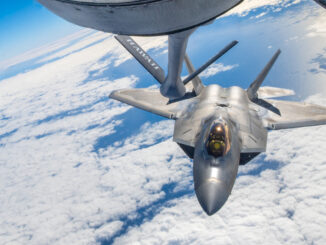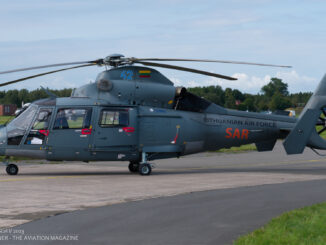 Bell OH-58B Kiowa (c/n 42249, 3C-OK of the Austrian Air Force / Österreichische Luftstreitkräfte), static display during open doors day at 22nd Helicopter Air Force Base of the Czech Air Force, Náměšť nad Oslavou, May 2024.
Bell OH-58B Kiowa (c/n 42249, 3C-OK of the Austrian Air Force / Österreichische Luftstreitkräfte), static display during open doors day at 22nd Helicopter Air Force Base of the Czech Air Force, Náměšť nad Oslavou, May 2024.
In 1960, the US armed forces opened a competition for development of a Light Observation Helicopter (LOH). A total of thirteen aviation companies took part in the contest with Bell Helicopter and Hiller Aircraft finally announced as the winners.
The Bell´s project was designated D-250 / YHO-4 but, due to its weird design, the rotorcraft was quickly nicknamed the Ugly Duckling. Five prototypes were made for evaluation purposes and flight testing which began in December of 1962.
Eventually, the US Army rejected both the Bell and Hiller concepts and selected another competitor, the Hughes company and its Model 369, later known as OH-6 Cayuse. Any further attempts of the Bell company to sell the D-250, now redeveloped into Model 206, failed. Both because of the bizarre design and small cabin size which also lacked any cargo compartment.
In consequence, the company redesigned the rotorcraft to meet market demands and change its strange look. The new helicopter, designated Model 206A JetRanger, became a big market success and started an entire family of light multipurpose rotorcraft. They were produced by Bell until the end of 2010s with more than 7,000 examples of the helicopter built.
In 1967, the US Army re-opened the LOH competition, due to low production capacity at Hughes. The Bell company entered it with the 206A and was successful this time. The helicopter was approved by the military authorities and received new designation OH-58A Kiowa, in honour of the Native American tribe.
The first Kiowa was introduced into operational service in May of 1969 and just two months later, the first examples were deployed to South Vietnam. The rotorcraft were used as scout aircraft, performed reconnaissance and fire support tasks.
The OH-58A was used in combat during numerous conflicts and military operations, such as the Vietnam War, Operation Prime Chance, the Gulf War, Operation Just Cause, Operation Iraqi Freedom, Operation Enduring Freedom and the so-called War on Drugs of the 1990s.
More than 2,300 examples of the Kiowa were built and, apart from the US armed forces, were also acquired by several air forces all over the world, including Austria, Australia, Croatia, Canada, Greece, Spain, Taiwan and Tunisia.
In 1976, the Austrian armed forces acquired twelve examples of the OH-58. All helicopters were of B variant, purposedly tailored for the needs of the country air force.
In the Austrian service, the helicopter was used for ´pathfinder´ duties, reconnaissance, aerial filming and border surveillance. The OH-58B is equipped with M134 Gatling machine gun, can carry up to 4 passengers or 300 kg of internal cargo (550 kg on external sling).
In 2001, the helicopter 3C-OK received a special livery to celebrate the 25th anniversary of the OH-58B service in Austria. The painting that depicts a head of Kiowa warrior, was designed and made by Austrian paintbrush artist, Knud Tiroch. On 9th June 2001, the new livery was disclosed to public during an open day held in Fliegerhorst Brumowski (Langenlebarn air force base).
On 1st May 2024, the Kiowa 3C-OK participated in open day held at 22. základna vrtulníkového letectva (the 22nd Helicopter Air Force Base) in Náměšť nad Oslavou, where our current Photo of the Week was taken.



